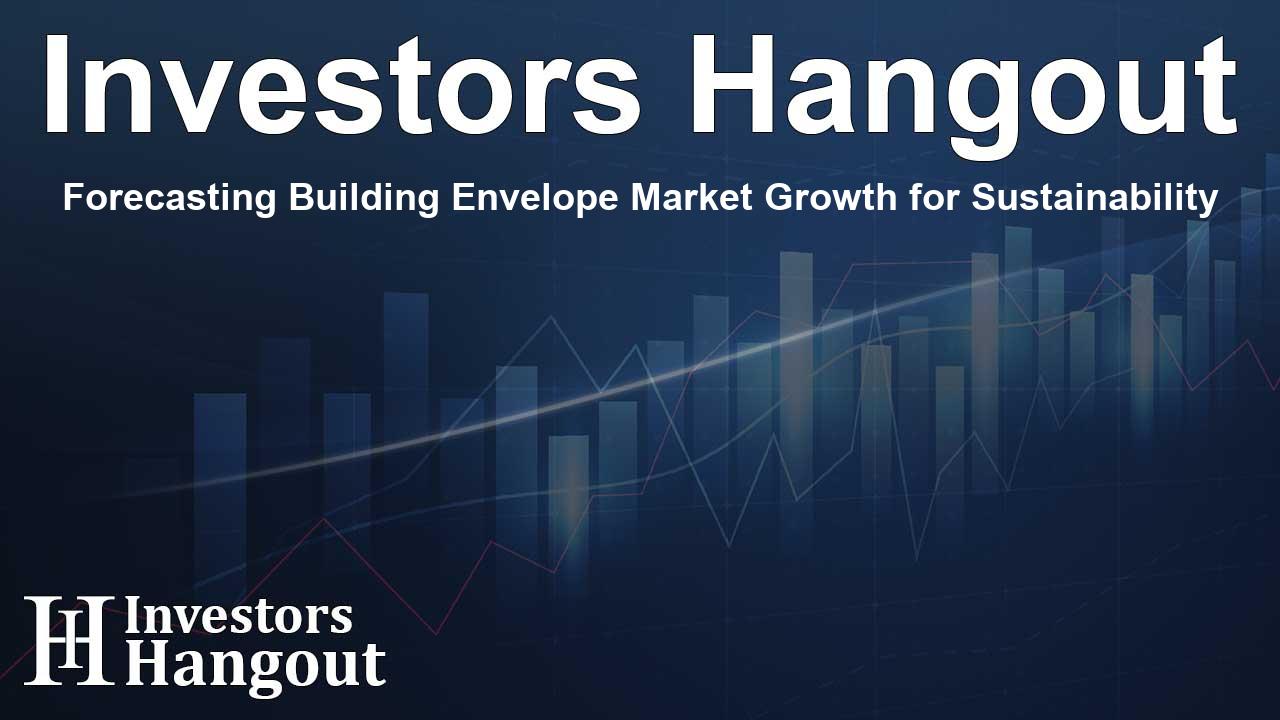Forecasting Building Envelope Market Growth for Sustainability

Building Envelope Market Overview
The global building envelope market is poised for remarkable growth, anticipated to rise from an estimated USD 117.48 billion to approximately USD 201.63 billion. This projected increase signifies a robust compound annual growth rate (CAGR) of 5.55% over the upcoming years. This growth is largely underpinned by an increasing focus on energy-efficient and sustainable construction practices that respond to rising environmental concerns.
Driving Forces Behind Market Growth
Significant factors contributing to the expansion of the building envelope market include the implementation of stringent building codes, escalating energy costs, and a growing awareness of environmental sustainability. Each sector within the market—ranging from walls and roofs to windows and doors—plays a crucial role in enhancing a building's overall performance and energy efficiency.
The Importance of Building Envelopes
Building envelopes serve as a barrier between indoor and outdoor environments, significantly affecting thermal control and energy usage. Their design and material selection are paramount in minimizing energy consumption and ensuring comfortable indoor conditions. This is especially vital as urbanization accelerates, prompting a call for innovative architectural solutions.
Enhancing Energy Efficiency
High-performance building envelopes are central to transitioning towards cleaner energy solutions. They help in substantially reducing a building's thermal energy requirements, assuring both occupant comfort and sustainability. By employing advanced materials that adapt to environmental changes, the overall efficiency of buildings can be significantly increased.
Market Insights and Trends
The North American building envelope market, valued at USD 35.24 billion, is expected to exceed USD 60.63 billion by 2034, with a CAGR of 5.58%. This region is characterized by high demand for sophisticated envelope systems driven by building codes, environmental considerations, and industry advancements.
Key Product Segments
The growth of the building envelope market is supported by diverse product segments. The glass segment currently dominates, making up 30% of the market share, while wall systems represent 40% of the sector, indicating a strong preference for these solutions in modern construction.
Transformative Technologies in Building Envelopes
Technological innovations, particularly in smart and energy-efficient solutions, are reshaping the landscape of the building envelope market. These advancements streamline building designs and enhance energy preservation through integration of automation and responsive materials.
Artificial Intelligence's Role
Key to the market's evolution is the role of artificial intelligence (AI). The technology aids in the design process, creating optimized envelopes that cater to specific performance requirements. AI also facilitates real-time monitoring, thus extending the lifecycle of encompasses and minimizing maintenance costs.
Market Challenges and Opportunities
Despite its growth prospects, the building envelope market faces significant hurdles, including high initial costs associated with advanced materials and technologies. Furthermore, the variety of regional regulations complicates compliance for manufacturers.
Emerging Sustainable Materials
On the flip side, there is a growing trend towards bio-based insulation materials that promise reduced carbon footprints and competitive thermal performance. Incorporating innovative solutions not only aligns with sustainability goals but also enhances market share for emerging companies.
Future Outlook and Innovations
With expectations of sustained growth, the building envelope market is set to evolve as a vital sector in addressing climate change. The continuous push for energy efficiency will drive innovations in materials and construction techniques, further establishing this market as a cornerstone of sustainable building practices.
Conclusion
The building envelope industry is on the brink of transformative growth, driven by environmental awareness and technological advancements. With key developments towards sustainable construction, the market is poised for a significant upturn, reflecting a collective commitment to energy efficiency and resilience.
Frequently Asked Questions
1. What is the expected market size of the building envelope market by 2034?
The building envelope market is projected to reach approximately USD 201.63 billion by 2034.
2. What factors are driving the growth of the building envelope market?
Factors include stringent building codes, rising energy costs, increased focus on sustainability, and innovative materials.
3. Which regions are expected to dominate the building envelope market?
North America is anticipated to dominate the market, followed by significant growth in the Asia Pacific region.
4. How does AI impact the building envelope market?
AI enhances design processes, provides real-time monitoring, and helps identify issues before they escalate, thus minimizing costs.
5. What are some challenges facing the building envelope market?
Challenges include high upfront costs for advanced systems and the complexity of compliance with various regional regulations.
About The Author
Contact Riley Hayes privately here. Or send an email with ATTN: Riley Hayes as the subject to contact@investorshangout.com.
About Investors Hangout
Investors Hangout is a leading online stock forum for financial discussion and learning, offering a wide range of free tools and resources. It draws in traders of all levels, who exchange market knowledge, investigate trading tactics, and keep an eye on industry developments in real time. Featuring financial articles, stock message boards, quotes, charts, company profiles, and live news updates. Through cooperative learning and a wealth of informational resources, it helps users from novices creating their first portfolios to experts honing their techniques. Join Investors Hangout today: https://investorshangout.com/
The content of this article is based on factual, publicly available information and does not represent legal, financial, or investment advice. Investors Hangout does not offer financial advice, and the author is not a licensed financial advisor. Consult a qualified advisor before making any financial or investment decisions based on this article. This article should not be considered advice to purchase, sell, or hold any securities or other investments. If any of the material provided here is inaccurate, please contact us for corrections.
